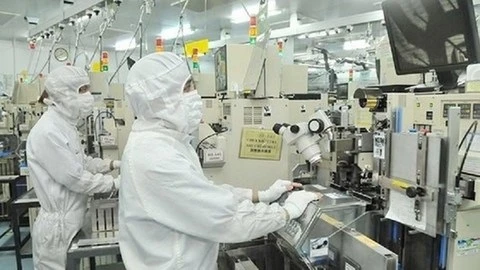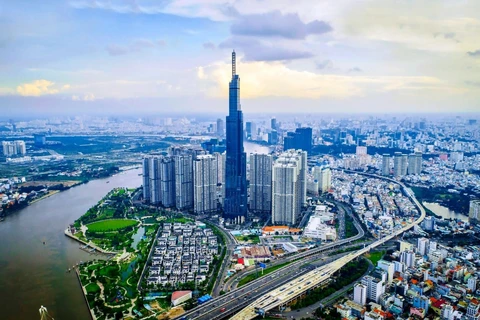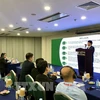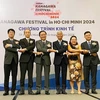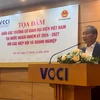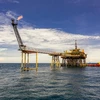Hanoi (VNA) - Vietnam has yet to lose its advantage as an attractive destination for foreign investment flows, although in the short term, investors are taking a careful consideration before making their decision, according to Lecturer Nguyen Xuan Thanh from the Fulbright School of Public Policy and Management.
In addition to a common trend of decrease over the globe, unnecessary procedures, tax incentives and low licensing are making investors hesitate. However, in the long term, Vietnam remains a country with various advantages in investment attraction, Thanh stressed.
Sharing the same view, Michael Kokalari, chief economist at investment fund VinaCapital, said that Vietnam will continue to be a prime destination for FDI, particularly from multinationals looking to produce exports and seeking an alternative and/or additional manufacturing base to China, for the foreseeable future.
According to him, the new global corporate minimum tax (GMT) is unlikely to impede FDI inflows to Vietnam, given the fact that tax incentives are not the primary attraction for setting up a factory in the country
In 2021, over 100 countries, including Vietnam, agreed to the Organisation for Economic Cooperation and Development (OECD)’s proposal for the GMT that will impose a 15% minimum corporate tax rate on income for companies with consolidated incomes above circa 850 million USD starting from 2023. The implementation of this agreement was subsequently delayed to 2024.
Some observers have also noted that planned FDI into Malaysia and Indonesia surged during the last two years, while Vietnam’s registered FDI was essentially flat. However, investments into Malaysia and Indonesia were largely channelled into the production of goods Vietnam does not make, including electric vehicle batteries.
Kokalari said Vietnam had attracted far more than its “fair” share of FDI since the US-China trade tension emerged in 2018.
In addition to a common trend of decrease over the globe, unnecessary procedures, tax incentives and low licensing are making investors hesitate. However, in the long term, Vietnam remains a country with various advantages in investment attraction, Thanh stressed.
Sharing the same view, Michael Kokalari, chief economist at investment fund VinaCapital, said that Vietnam will continue to be a prime destination for FDI, particularly from multinationals looking to produce exports and seeking an alternative and/or additional manufacturing base to China, for the foreseeable future.
According to him, the new global corporate minimum tax (GMT) is unlikely to impede FDI inflows to Vietnam, given the fact that tax incentives are not the primary attraction for setting up a factory in the country
In 2021, over 100 countries, including Vietnam, agreed to the Organisation for Economic Cooperation and Development (OECD)’s proposal for the GMT that will impose a 15% minimum corporate tax rate on income for companies with consolidated incomes above circa 850 million USD starting from 2023. The implementation of this agreement was subsequently delayed to 2024.
Some observers have also noted that planned FDI into Malaysia and Indonesia surged during the last two years, while Vietnam’s registered FDI was essentially flat. However, investments into Malaysia and Indonesia were largely channelled into the production of goods Vietnam does not make, including electric vehicle batteries.
Kokalari said Vietnam had attracted far more than its “fair” share of FDI since the US-China trade tension emerged in 2018.
The economist also mentioned Tim Cook’s visit to India in April, which spawned a plethora of articles on the intentions of Apple and others to build new factories in the country. But it is important to note that most products of those factories will be sold in the Indian market. In short, new investments to India are not being motivated by the “China 1” investment strategy that has driven FDI inflow into Vietnam over the last decade, particularly at an accelerated pace since the start of the US-China trade tension.
“We do not see India threatening Vietnam’s FDI inflow and continue to believe FDI is likely to remain one of Vietnam’s key growth drivers for years to come. The current wave of new FDI announcements in India should not be viewed as taking investment away from Vietnam,” Kokalari stressed.
Last month, Apple supplier Quanta Computer signed an agreement with the People’s Committee of the northern province of Nam Dinh on developing a large-scale computer factory at My Thuan Industrial Park.
In February, Nam Dinh’s neighbouring province of Thai Binh also granted an investment license to a 260-million-USD factory of Compal, another partner of Apple.
Meanwhile, the US multinational technology company’s leading partner, Foxconn, is also planning to build a project in the central province of Nghe An, after successes of its projects in northern Bac Giang and Bac Ninh provinces./.
VNA




